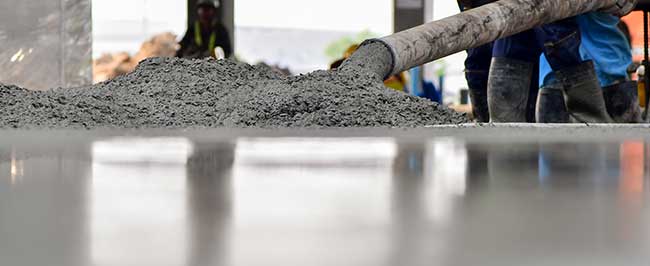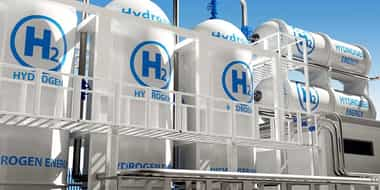
Nov 25, 2020
Blog Energy & Sustainability , Materials Why Concrete Is Awesome (We’re Serious)
Solidia is saving the world with their sustainable concrete and cement solutions. We love this company so much that we’ve blogged and podcasted about them before, and we’re interviewing them for our blog today.
BCC: Can you briefly tell us how Solidia Technologies Inc. came into being? How did it start, and with what ideals?
Solidia: For over 50 years, scientists have tried to cure concrete with CO2 knowing the resulting product would be stronger and more durable; SolidiaConcrete is the first to become commercially viable. The process was co-invented by Vahit Atakan, PhD, Solidia’s Chief Scientist and a former graduate student at Rutgers University, and Richard Riman, Rutgers’ Distinguished Professor of Materials Science and Engineering.
Solidia was founded in 2008 with exclusive rights to commercialize the first patents for the technology, which are held by Rutgers. The technology has evolved dramatically since its earliest inceptions; the patents today are mostly held by Solidia scientists and engineers.
Solidia’s purpose is to make sustainability “business as usual” by making a game-changing technology easy to adopt by one of the world’s largest and oldest industries. Currently sold in the US, Solidia Concrete™ products are higher performing, cost less to produce and cure in less than 24 hours compared to the traditional 28 days required for traditional concrete to reach full strength. Solidia overcomes barriers to adoption by using the industry’s existing infrastructure, raw materials, formulations, production methods and specifications.
To move the needle on carbon we need to move quickly, with new technologies and practices that can scale quickly and globally. The $1 trillion global concrete and $300 billion cement markets are among the few large enough to make a meaningful impact fast enough on carbon.
Solidia’s is one of the only technologies that both reduces emissions and consumes CO2. Solidia Cement™ is produced in traditional cement kilns at lower temperatures, thereby reducing greenhouse gas emissions by 30-40%. Our concrete curing technology permanently and safely consumes another 240 kg of CO2, leaving 3-5% of the finished product weight as solid CO2. The water used to form the concrete products can also be recovered. At full market conversion, each year, Solidia’s technologies can save three trillion liters of fresh water, reduce energy consumption equal to ~260 million barrels of oil (or 67 million tonnes of coal), and eliminate 100 million tonnes of concrete landfill waste. By producing higher-performing products that saves manufacturers time, water, energy and money, adopting a sustainable technology becomes a smart business move.
BCC: What problems are you trying to solve?
Solidia: The production of cement, the “glue” used to make concrete, is the second largest emitter of CO2 on the planet, responsible for ~8% of total emissions. For every ton of cement produced, a ton of CO2 is released into the atmosphere. Global demand for concrete is second only to the demand for water, and population growth and urbanization is driving up demand. Solidia is striving to reduce emissions in production of cement and concrete, potentially even turning concrete into a carbon sink for the planet, and to conserve water. Solidia just recently announced its innovation of Solidia as a supplementary cementitious material (SCM) which can replace fly ash from coal plants and slag from steel mills.
Solidia strives to make a lasting impact on the global carbon challenge and to make that impact measurable with state-of-the-art data analysis techniques and protocols. Solidia is also working to develop a digital exchange mechanism that will allow environmental impacts to be quantified and traded in the marketplace. Very few environmental innovations can actually be measured, quantified and proven, as Solidia’s can. The world needs that level of precision. Some governments are also establishing mechanisms for accurately quantifying and reporting impact. Solidia is viable without government regulations, restrictions, rebates, etc., but it is also a vital solution for industry in markets where carbon economies take hold.
BCC: How has COVID affected your operations and outlook?
Solidia: Construction is considered an essential business; Solidia falls under that categorization as a supplier to building materials manufacturers.
We have an industry that by and large is open, so we are having to work with our customers, either live or remotely to support them so we have more work going on right now that I could have ever imagined. It has not slowed down for us; if anything it has accelerated.
We have not slowed down the capacity we have in place at all, EP Henry [now selling Solidia precast products] would tell you that they’re effectively sold out and are anxious to start up this new capacity so they can meet that demand. They expect that to be sold out as well, so even in this environment, certainly the performance of the product is driving the day.
We’re doing some equipment installations right now, we’ve had to change completely the way our employees work together and with contractors that are able to work, and then we do have in our office setting. If you can work from home we have people working from home, there’s limited testing going on but everybody follows the right PPE standards, social distancing standards, we make sure we’re doing everything to keep our employees are safe.
I think we’re finding that telecommuting is not a bad thing; I think people are more productive in a lot of cases. In some cases, nothing beats pulling people together but that will certainly change. Doing development at the customer level as opposed to doing it at our facility makes it more efficient, makes it faster and makes it so the customer sees results earlier. The other thing that we’re doing is spending a lot of time with preplanning everything so that when we are able to get on site, everything is laid out. It’s coordinated with the customer, so that initial load of work that really no one has time to do, is critical to making all the work when it does happen go much faster as opposed to iterating. The thing that we’re also realising is that we have to have localised employment. We’re going to need a European team, need a Chinese team to facilitate better customer support.
What we are hearing anecdotally is a lot of focus on people rethinking the way that they work, the products that they choose, and this idea that you go outside. My wife said this the other day—it just smells different, it smells fresher, the sky is clearer, the stars sparkle, and people are going, “Wow! I like that!” You see all these stories in India they can now see the mountains again. There is no question that we’re doing everything we can to make sure that we’re positioned to take advantage of any increased interest in sustainable products, but I think that we rely at this point still on a better product that makes our customers more money, and the fact that it’s green is just going to be the icing on the cake.
BCC: Where do you see the industry in 20 years?
Solidia: Getting a conservative, 2000-year-old industry that hasn’t innovated in about 200 years to shift is daunting. But the industry knows it has a serious sustainability issue. The Cement Sustainability Initiative of the World Business Council for Sustainable Development set 2050 CO2 reduction targets for the global cement industry. If Solidia’s technology were adopted globally, the industry could reach that goal in three years.
The leading cement companies have been working on a variety of solutions, such as changing the type of energy they source and attaining efficiencies in production. We are even incorporating AI in the curing chambers (sensors that can monitor the process, and computers that can control it remotely), giving manufacturers eyes on their production process in a way unheard before. We are helping an ancient industry shift into the digital age.
Demand for sustainable innovation is rising. Environmental impact is now measured even as a financial risk. Coupled with an elevated awareness that climate solutions need to come from industry (consumer products will not solve the problem fast enough), and industry and political commitments such as the Paris Accord, COP21, new technologies will have taken hold in 20 years.
In 20 years, the building materials industry will fully understand the environmental impact of concrete and cement. That awareness is just now truly taking root, and players and consumers and just now understanding they have choices. Prior to this, concrete was merely a commodity. All this awareness and momentum will drive these adoptions.
We also hope to shift CO2, one of the world’s most deleterious pollutants, into a valuable commodity. We need it. There is tons of CO2; it’s just not in the right place. An awareness of the need for innovation in carbon capture, utilization and storage (CCUS), is growing quickly.
Dive deeper into the market for sustainable concrete and cement with these resources:
Full-length report: Smart Concrete: Technology Overview
Full-length report, Carbon Capture, Utilization & Storage Technologies
White paper: The Future of Translucent Concrete

Sarah Greenberg is the Manager of Content Marketing at BCC Research. She creates our blog, social media and email content.

Electrical switches—devices that control the flow of electricity—are the backbon...

Biophotonics: Technologies and Global Markets (PHO024B)

As the world accelerates toward net-zero emissions, hydrogen, and ammonia have e...

We are your trusted research partner, providing actionable insights and custom consulting across life sciences, advanced materials, and technology. Allow BCC Research to nurture your smartest business decisions today, tomorrow, and beyond.
Contact UsBCC Research provides objective, unbiased measurement and assessment of market opportunities with detailed market research reports. Our experienced industry analysts assess growth opportunities, market sizing, technologies, applications, supply chains and companies with the singular goal of helping you make informed business decisions, free of noise and hype.